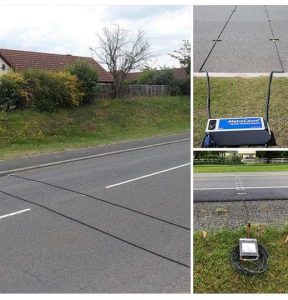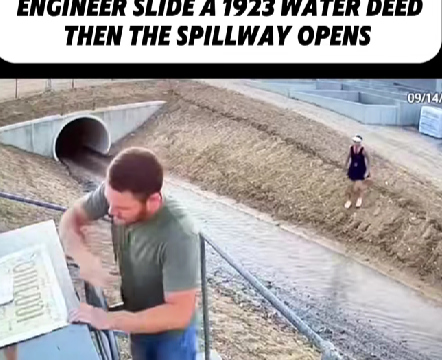If you’ve ever driven over black cables stretched across the road, you might have wondered what they are for. These simple-looking tubes, seen on roads across the country, actually serve an important purpose. They’re vital tools for traffic management, collecting data that helps shape how we maintain and improve our transportation systems.

What Are These Cables?
These black tubes are known as pneumatic traffic counters. They’re designed to gather information about traffic patterns, vehicle counts, and how roads are being used. This data is essential for transportation authorities who rely on accurate information to make decisions about road safety, management, and infrastructure development.
How Do They Work?
The way these tubes work is surprisingly simple. When a car’s tires roll over the tube, a burst of air is created inside it. This burst of air then triggers an electrical signal in a connected device, which records the event. By analyzing the frequency and timing of these signals, transportation officials can count how many vehicles pass over the road and collect other important data like vehicle speed and direction.
Why Does the Data Matter?
Counting Vehicles and More
At its most basic level, a single tube counts how many vehicles drive over it. However, when two tubes are used together, they can collect more detailed information. This setup allows for measuring vehicle speed, classifying the types of vehicles (based on the number of axles and their spacing), and determining which direction the vehicles are traveling. This data is critical for understanding peak traffic times, setting speed limits, and assessing road capacity.
How Traffic Data Impacts Decisions
The data collected by these pneumatic counters is essential for making informed decisions about road safety and traffic management. It helps transportation officials decide where to place traffic signs, set speed limits, and plan road repairs or expansions. By providing a clear picture of how roads are used, these black tubes ensure that transportation systems are both safe and efficient.
Beyond Counting: The Many Roles of Road Tubes
Temporary vs. Permanent Installations
Traffic counters can be installed temporarily or permanently, depending on the purpose. Temporary installations are often in place for just a day or two and provide a snapshot of traffic patterns at a specific time. These are used for short-term studies or to address specific issues, like verifying reports of speeding. Permanent installations, on the other hand, offer continuous data collection, which allows officials to track traffic trends over a longer period.
Strategic Placement for Accurate Data
To gather the most accurate data, transportation agencies place these tubes on straight sections of the road where traffic moves smoothly. This placement helps ensure that the data reflects typical road usage without interference from factors like sharp turns or frequent stops.
Impact on Traffic Policies and Road Planning
Shaping Traffic Policies
The data gathered from these road tubes plays a vital role in shaping traffic policies. By analyzing traffic flow and vehicle behavior, transportation planners can make informed decisions about where to implement traffic calming measures, how to design roads, and where to allocate funds for improvements. This data-driven approach helps ensure that roads are safe and capable of handling current and future traffic demands.
Addressing Public Concerns
These black tubes also play a key role in responding to community concerns. If residents report issues like speeding or increased traffic in residential areas, transportation agencies can deploy these tubes to gather data and verify the problem. This information can then be used to implement solutions, such as installing speed bumps or adjusting traffic signals.
The Unseen Heroes of Our Roads
The next time you drive over one of these black cables, take a moment to appreciate the important role they play. These simple devices are the backbone of data collection that informs nearly every decision about road management and safety. Though easy to overlook, they are the silent guardians of our streets, ensuring that our roads operate smoothly and efficiently.





